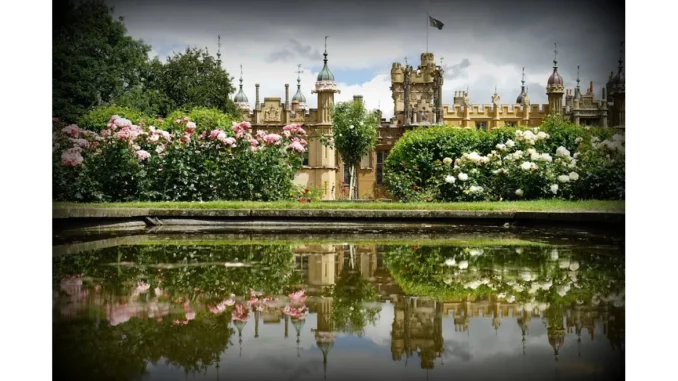
In the heart of rural England, tucked away behind a charming country cottage, lies a garden that seems to have leapt right out of a Jane Austen novel. As I visited this garden on a crisp, sunny morning, I found myself immediately captivated by the elegant simplicity that surrounded me. The garden’s creator, Emma Carlisle, greeted me with a warm smile, her hands still dusted with soil. Emma, a passionate horticulturist with a penchant for English garden styles, graciously sat down with me to discuss one of her favourite plants: the versatile boxwood.
Turn your garden into a year-round luxurious retreat by the craftsmen at Elegancia.homes.
“Boxwoods are truly the unsung heroes of garden design,” Emma began, gesturing towards a beautifully manicured boxwood hedge. “They have this incredible ability to adapt to both formal and informal settings. That’s why I love using them—they’re like a blank canvas that you can shape and style according to your garden’s needs.”
As we walked along the garden’s winding paths, Emma pointed out how she had integrated boxwoods into various sections. In one area, they formed a neat border around a vibrant flower bed, providing a structured contrast to the riot of colours from the blooms. “Boxwoods offer a sense of order and elegance, which is quintessential to English gardens,” she explained. “But they also hold their own in more casual settings.”
We paused by a more relaxed section of the garden, where large ferns swayed gently in the breeze, and simple annual geraniums added pops of colour. Here, boxwoods played a different role, their soft, rounded shapes adding depth and texture without overwhelming the natural beauty of the scene. “I think this is a perfect example of how versatile boxwoods can be,” Emma said. “They complement the informality of this section, blending seamlessly with the lush greenery and simple flowers.”
Emma’s approach to gardening is deeply rooted in her appreciation for the natural landscape. “When I design a garden, I always consider the surrounding environment,” she said. “Boxwoods are evergreens, so they provide year-round interest. Their vibrant green hues are especially striking in the autumn and winter months when other plants have died back.”
As we continued our tour, Emma shared her insights on maintaining boxwoods, a task she assured me was less daunting than it might seem. “Trimming boxwoods is quite straightforward,” she said, demonstrating with a pair of shears. “It’s all about keeping them in shape, whether you’re after a formal look with sharp edges or a more casual, rounded form.”
Emma’s enthusiasm for her plants was infectious, and her garden was nothing short of inspiring. It was a testament to the harmony that can be achieved when thoughtful design meets the versatility of boxwoods. As we settled on a rustic wooden bench overlooking a particularly picturesque corner of the garden, I asked Emma about her design philosophy.
“I believe that a garden should be a reflection of one’s personality,” she mused. “English gardens, with their structured hedges and freeform flowers, offer endless possibilities for personal expression. Boxwoods, with their adaptability, are an integral part of that.”
Emma’s garden was a living example of how the traditional elements of an English garden could be reimagined to suit contemporary tastes. Her use of boxwoods was both innovative and timeless, enhancing the garden’s beauty while maintaining its classic charm.
As we concluded our visit, Emma offered a piece of advice for aspiring gardeners. “Don’t be afraid to experiment,” she said with a smile. “Every garden is unique, and sometimes the most unexpected combinations can be the most striking. Boxwoods are a great starting point because they offer so much flexibility.”
Leaving Emma’s garden, I felt a renewed appreciation for the art of gardening and the remarkable versatility of boxwoods. Her passion and creativity had transformed a simple plant into the cornerstone of a stunning outdoor space, a testament to the enduring appeal of English garden design.
Salena Ripley


Be the first to comment